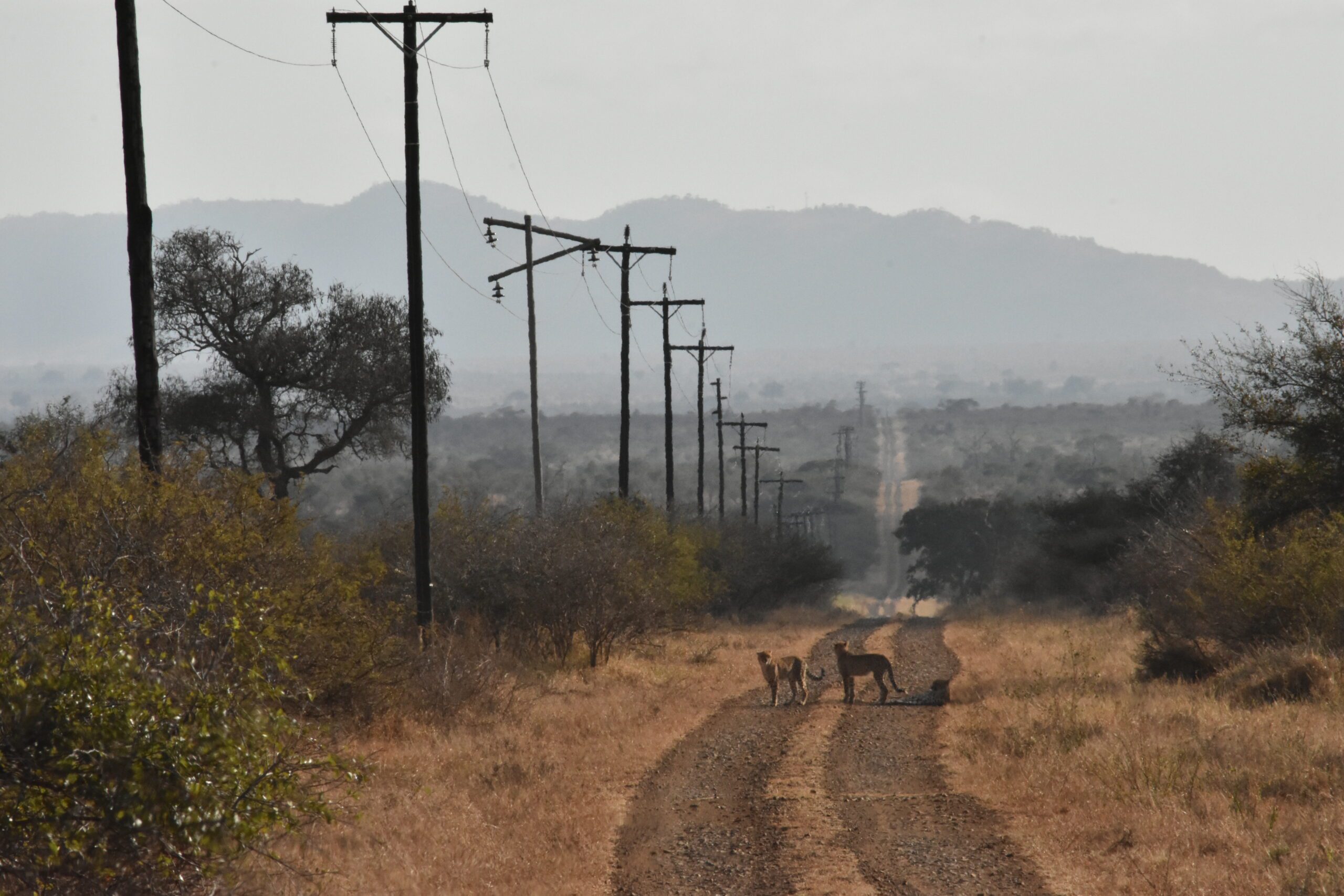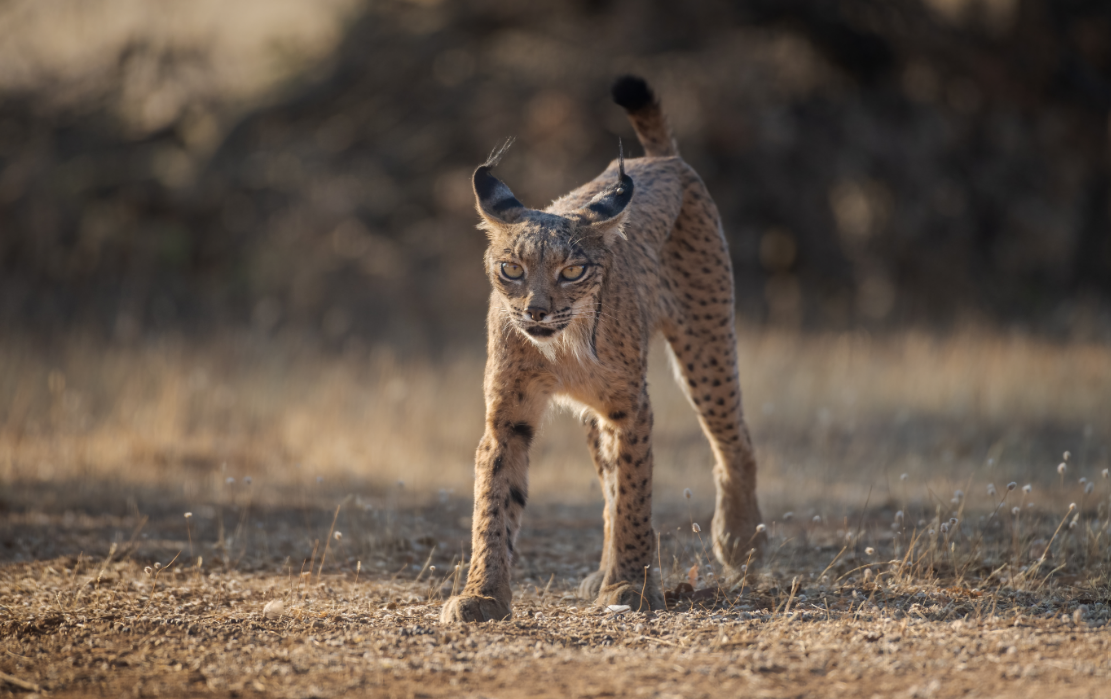

The New Big 5: five beautiful animals that are difficult to spot in the wild
The Big 5 is a term trophy hunters in Africa coined to list the five most difficult and dangerous animals to add to their walls: the lion, leopard, rhino, elephant and buffalo. Today tourists to Africa still use it as a metric of how successful their safari was. “Oh it was amazing, we saw four of the Big 5!” In cases like this, you can usually assume it was the leopard that got away.
Since safaris and wildlife tourism have taken on a more bloodless nature, that has made it physically easier for the human and infinitely more pleasant for the animal. So with that in mind, it’s time for an update, for there are iconic animals out there that don’t even afford a sighting in the wild without a significant amount of effort.
Pygmy hippo


Probably the most adorable animal on this list (the sight of their babies can turn anybody mushy), pygmy hippos are unfortunately immensely rare in the wild and poles apart from their larger cousins who so obligingly lounge around in the waterholes of Africa’s most popular parks. Pygmies can only semi-reliably be seen at night on Tiwai Island in Sierra Leone. Independent travel is not easy but nor is it as difficult as one might suppose, with a combination of shared taxis and speedboats able to get you across a now-safer Sierra Leone. As a community-run project, things are reasonably priced at Tiwai, so you could take quite a few boat trips onto the rivers – and you’d need to, for pygmies are incredibly wary of humans after years of poaching during the civil war. Sierra Leone’s ecotourism industry is taking off bit by bit but the country only just recovered from the war and ebola, and it will be a while before the pygmy hippo becomes trusting of humans again. Indeed, some researchers spend weeks here without seeing one. March and April, the dry season, are the best months to visit when the hippo has less water to hide in.
Clouded leopard


If you want to slightly cheat on this one, it has been frequently sighted in Borneo as of late. Deramakot Forest Reserve is an especially good place to visit given that they run night drives in some prime habitat, which has produced some up-close sightings in recent years. The only catch? It’s the Sunda clouded leopard, a separate species. The clouded leopard looks quite similar and often has “mainland” added to its name for distinction, and can be theoretically found in the Himalayas down to Peninsular Malaysia. Kaeng Krachan National Park in Thailand is the best place to look (backpackers rejoice), and a few people report having seen them in Khao Yai further north. In both cases, you’d need to take a hefty number of night safaris to stand anything close to a reasonable chance of seeing one. Unlike its Bornean counterpart, sightings are not at all frequent.
Snow leopard


Quite possibly the most beautiful big cat, this animal is to wildlife photographers what Moby Dick is to whalers. Distributed across the Himalayas, no small area, it is a master of disguise and rock climbing alike. Finding one requires a telescope and a strong will, for hours will be spent scanning the rock face – and carefully too, for its camouflage is such that one can be looking right at it and be none the wiser. Its saving grace is the existence of a bit of a tourism industry built up around this big cat in Hemis National Park in Ladakh, where sightings have become regular enough that now there are tours on can go on and guides that can be hired to help with the hunt for them. Rumbak Valley is considered a hotspot for them, and it’s mercifully close to the regional capital of Leh. On a less merciful note, winter is the best time to go looking as they are more active in the hunt for their prey at that time.
Javan Rhino
One of the world’s rarest animals, there are fewer than sixty in the wild and they all inhabit one not-quite-an-island piece of land on the tip of Java – Ujung Kulon National Park. They used to live across most of Southeast Asia, and the only reason they’re not extinct is the eruption of Krakatoa, one of the deadliest in human history, and a subsequent tsunami that rendered the peninsula uninhabitable. Ironically another one could be disastrous for the rhino’s existence…
Visiting the park itself is actually rather easy thanks to the presence of accommodation on Peucang Island, near “Rhino Central”, but expensive thanks to needing a boat to get anywhere. Getting to the island involves a ride from the village of Taman Jaya, which itself can be reached from Jakarta in a day by bus if you set off early enough. From either point, you can arrange for rangers to take you on the lengthy boat ride and trek through RC. You would need at least a week to realistically stand a chance of seeing a rhino.
Giant Panda


There are hundreds of panda centres around Sichuan province that make seeing one in captivity, feeding and even cuddling one easy as pie. Finding one in the wild is a completely different matter. Hiring a guide or going on a tour is paramount, for two main reasons. First, China’s national parks and nature reserves can be fairly fickle when it comes to allowing foreigners or even people in general access, sometimes opening up a small section or not at all for years at a time before reopening and reclosing. Who knows what this depends on, but I’ve heard tell that it can be the director’s mood at the time. Don’t expect them to have announced this publicly. Your guide will likely be able to make arrangements with the powers that be, or at the very least know if it’s scuppered so that the trip is not wasted. Wolong, Qinling and Foping Nature Reserves are the main spots to go looking, assuming you’re able to get in. Once you’re in you’ll almost doubtlessly have to trek for an age and a day to stand a chance of spotting Po. Pandas are solitary with huge territories, and they’re far more inconspicuous than you may suppose. As a result, some of the trekking could involve going off the trail altogether.
Oh, and one other thing: panda watching tours were illegal for a brief period from 2013 to… I can’t tell when it ended. Heck, I can’t even tell if it ended in an official capacity. The story goes, concerns over the possibility that the tours were “ecoterrorising” pandas (I haven’t a clue what that means) led to the Chinese government banning them altogether. And indeed, on mammalwatching.com’s China section there is a gap in giant panda sightings from that period onwards, which seems to have ended in 2018. So, it would appear they’re back on, but it’s a seriously opaque situation.
Five Honourary mentions:
Saola
For an animal that sounds like something out of Lord of the Rings and gets called the “Asian unicorn”, it may as well be mythological. It lives exclusively in forests along the Laos-Vietnam border, areas that one does not simply walk into: there’s the threat of landmines, permits required, lack absence of English and steep terrain to contend with. It was only discovered in 1992 and sightings have been few and far between since then, most of which were by poachers and almost none by conservationists – absolutely none if you don’t count those caught on camera traps. The animal is a bit of a status symbol for both groups, with the former viewing killing one as a mark of intense honour in the spirit of the original big 5, unfortunately. The latter view it as the pinnacle of a healthy habitat. Very little is known about the saola, including how many remain: estimates range from a few dozen to a couple-hundred.
So… why on earth is it not on the list? At the risk of sounding nitpicky: it’s too difficult to see. What made the original Big 5 term famous was that the animals were iconic and difficult to hunt, but it had to be somewhat possible to bag the five in order for it to gain popularity. Back on topic, if you’re mad enough to try to go looking, Vu Quang National Park is the most accessible and reliable place to do so. Both of those are relative terms, though; aside from being near a highway and a small nearby town full of guesthouses and eateries, there’s close to no tourist infrastructure to be found here. Succeed, and you’d become a zoological hero without a shadow of a doubt.
Kakapo
The most endangered bird in the world and a conservation success story, the kakapo is a large, flightless, nocturnal parrot that lives on two tiny islands off New Zealand. The only hope of getting to these islands is to find yourself in the employ of the country’s national parks service, a zoology society or the BBC wildlife division. Casual visitors are not permitted. The only thing keeping the kakapo off this list is the fact that it may not actually be that difficult to find once you set foot on the islands. Mark Carwardine and Stephen Fry certainly had little difficulty while filming Last Chance to See II in finding one after they had cleared the permits process and had all their belongings disinfected. The curious parrot approached the crew, and then proceeded to climb Carwardine’s back and shag the back of his head. Realistically, it’s only the human barriers that keep one from seeing this rare bird. They exist with good reason though: this species hangs on by a thread, its populations having been decimated by introduced pests. These islands are clear from such threats but the accidental introduction of a stowaway bug on your luggage or, god forbid, rats in your boat, could spell disaster.
Pangolins


The pangolins are a collection of species that got a bit of infamy in 2020 with the possibility that they were the origin of Covid-19. That would no doubt have been the fault of humans though, and whether that’s true or not, these animals have been truly shafted by the illegal wildlife trade. Such is the use of their scales in traditional Chinese medicine and food that they are the most trafficked animal in the world. Night drives in private reserves near Kruger offer your best chance, though even there you’d need the luck of the Irish. If you manage to find one, do not give away too many details on where to find it, and doubly so if it happens in Asia. There was a case a while back where one was found on a reserve in Singapore. Even though it’s probably the most difficult country in the world to be a poacher and the person who wrote a bit on where to find the animal no doubt meant well, as it was publicly available info some poachers were able to use it. Sadly, the rest is history.
Sumatran Rhino
If you thought the Javan rhino would be tough, you may wish to immediately abandon all hope of seeing this rhino in the wild. It is actually more common than its Javan cousin numbers-wise, but that’s an incredibly low bar. The crew of the recent BBC wildlife documentary Seven Worlds One Planet had to settle on filming one in captivity, and if you’ve watched enough of David Attenborough’s documentaries you’ll already know how mammoth are the efforts the film crews typically put into finding their quarries.
For another illustration of how borderline-impossible this animal is to see: Royle Safaris, a tour outfit, has published trip reports in which they’ve managed to show their guests some pretty rare stuff, including four of the animals on this list. There’s really no way to say that without sounding like I’m sponsored by them, but it’s the truth. The Sumatran rhino finally fed them humble pie in 2019. After fighting a slew of bureaucracy and security to make sure they were not poachers or would sell that info to folks with less than honourable intentions, they were taken by a team of rangers to a secret location said to be the best area for them. Two weeks they spent in this area of forest. They came up with signs of the rhino, but alas, no rhino itself.
Okapi
Probably the strangest animal on here, the okapi looks like a giraffe-tapir-zebra mish-mash, and inhabits a small portion of the Congolese rainforest. Calling it the “deepest, darkest” part would not be entirely inaccurate. This part is exclusively located in the Democratic Republic of the Congo, a country racked with instability and more wars than one can keep track of. To say tourist infrastructure is lacking would be an understatement. To make things even better the national parks in which the okapi lives are blighted by poaching and even the rangers’ headquarters themselves, kept functional by significant donations from abroad and the presence of international NGOs, are not immune to full-scale attacks from rebel groups. Much like the pygmy hippo, poaching has made the few surviving okapi wary of humans – and for the okapi, the memories of wartime poaching are much more fresh.





Matthew
Really nice article
shoestringsafari
Thank you!